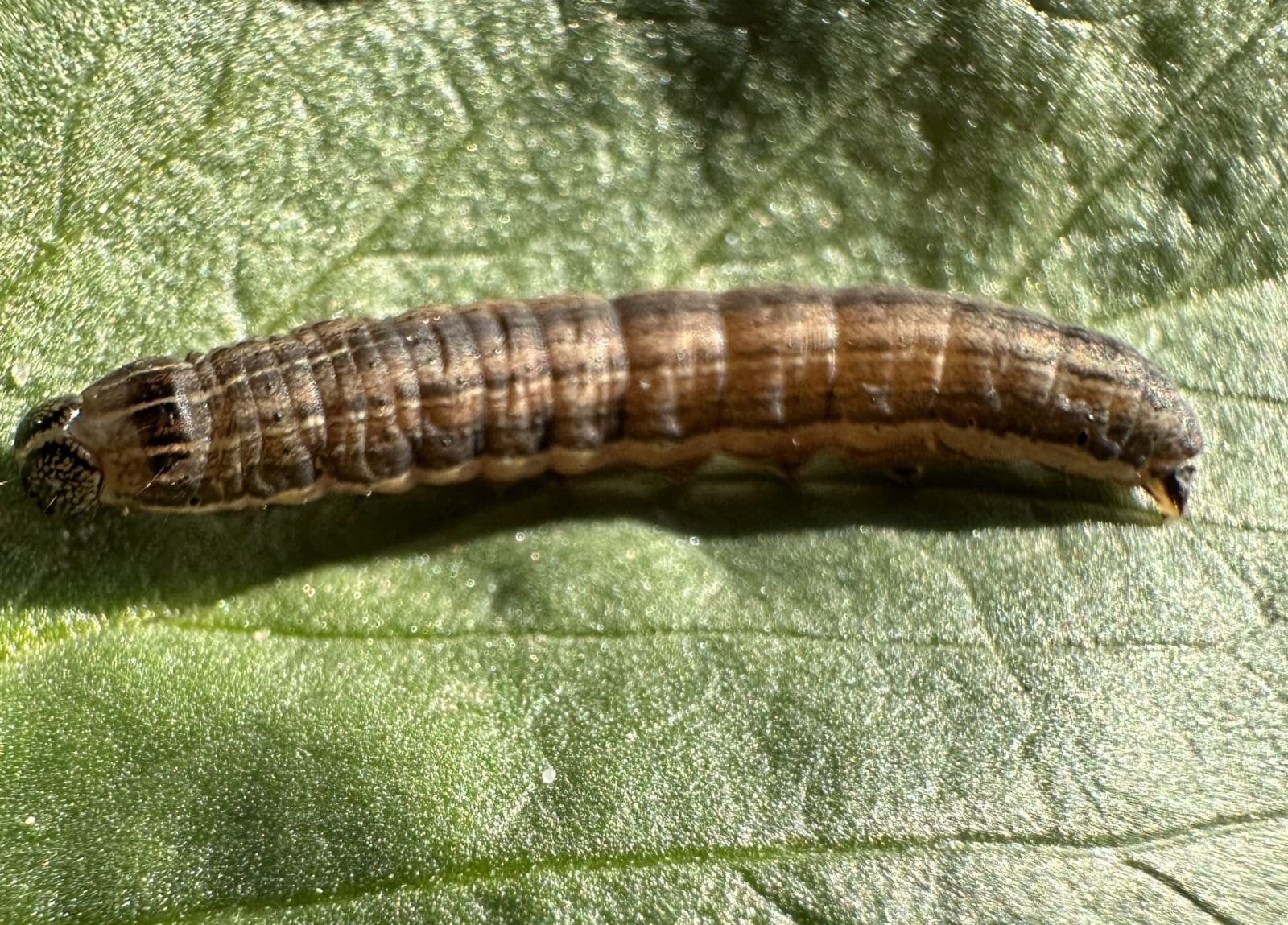
Fall armyworm has been found in a faba bean crop in the Cuballing district of WA. Photo: ConsultAg
GROWERS are being urged to check crops for caterpillars including fall armyworm (FAW) following the first detection of the pest in Western Australia’s grainbelt.
WA Department of Primary Industries and Regional Development research scientist Dustin Severtson said the FAW finding was made by local agronomists who noticed unusual caterpillars while monitoring a faba bean crop near Cuballing, north of Narrogin.
The caterpillars were submitted to DPIRD for identification, of which one was confirmed as FAW.
“Growers and consultants are reminded to be vigilant and check for this relatively new pest when
monitoring cereal, canola and pulse crops throughout the growing season,” Dr Severtson said.
This is the most southerly detection of FAW in WA since it was first confirmed in the state’s north in 2020.
In addition to established populations in the Kimberley and Pilbara, there have been previous detections of moths and larvae in irrigated crops near Gingin, and the detection of two FAW moths in sorghum at Northam.
The pest has been found in most states and territories around Australia.
DPIRD is encouraging growers to monitor for other caterpillars including native budworm, with
earlier-than-normal seasonal activity being reported.
Dr Severtson said other large caterpillars reported in the Cuballing crop were confirmed as native
budworm.
“This indicates that the initial budworm moth migrations have occurred very early this year, and it is
possible the fall armyworm migrated on the same weather events as the budworm.”
Dr Severtson said growers should sweep net crops to help determine larvae numbers hiding in the
canopy.
“Pulse and canola crops are major hosts of native budworm and very susceptible to damage.
“These crop types are considered secondary hosts of fall armyworm, which prefer maize, sorghum
and other grass crops.”
Cereal crops are also secondary hosts of fall armyworm.
“Fall armyworm was found in forage oat crops in Darling Downs, Queensland earlier this year and
caused substantial defoliation and killed young plants.
“It may be that the infestations in oats were related to an abundance of fall armyworm in nearby
maize and sorghum crops.
“Nevertheless, growers should be vigilant about the possibility of fall armyworm being in any crop
type.”
FAW larvae look similar to other caterpillars already present in the grainbelt, including other armyworm species commonly found in cereal crops.
Young larvae are a light green colour with a larger darker head.
They have dark spots and short spines along the body.
As they develop, they become darker and develop white lengthwise stripes.
As they mature, the larvae can be quite variable in colour.
More information about fall armyworm, including identification and control information, such as calculating thresholds, insecticide permits and integrated pest management options, can be found
at DPIRD’s Fall armyworm in Western Australia page.
Growers finding suspect caterpillars in their crops can request a free identification by using the
department’s PestFacts WA Reporter app; samples of the caterpillar may then be requested.
Source: WA DPIRD

HAVE YOUR SAY